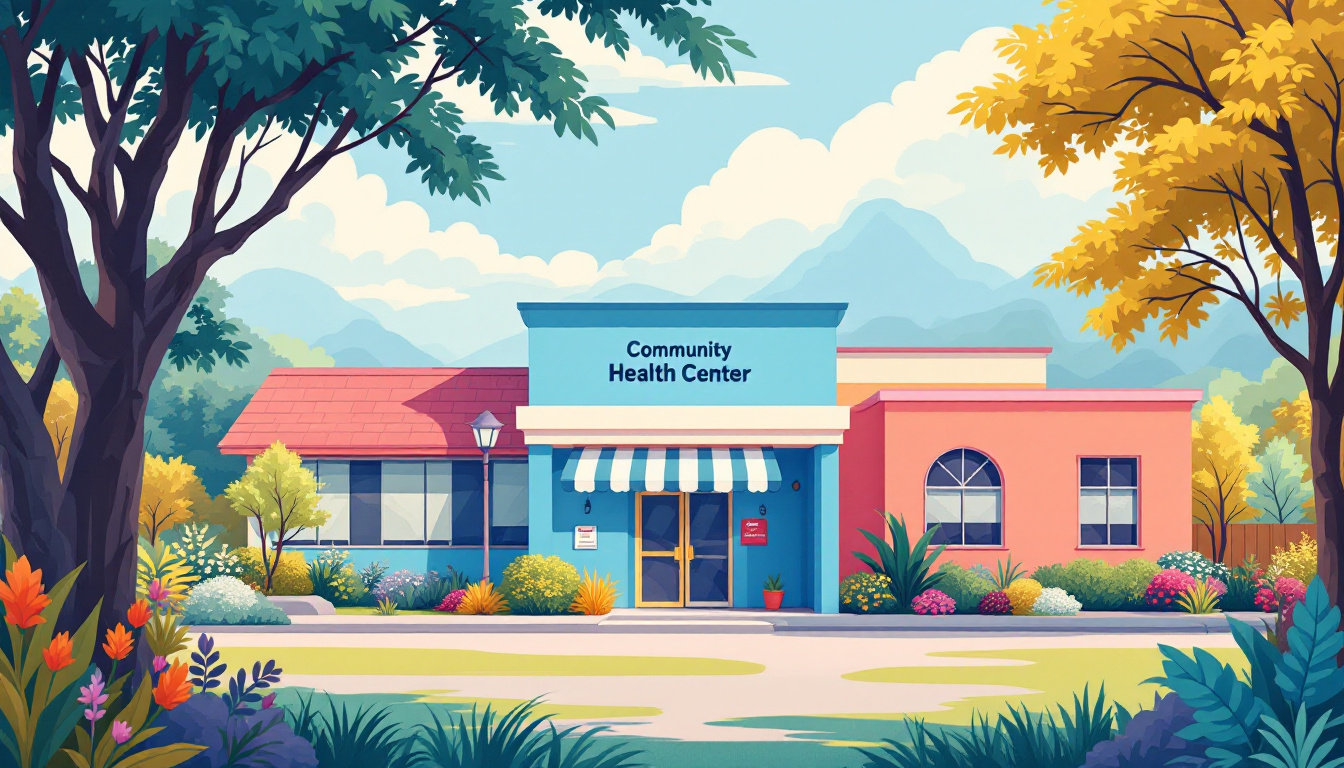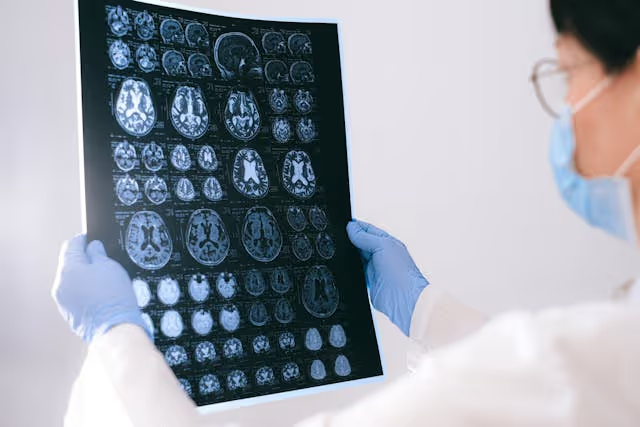The impact of healthcare literacy on patient outcomes
April 21, 2025
Unveiling the Critical Role of Health Literacy in Shaping Patient Outcomes


Understanding the Power of Health Literacy
Health literacy, a crucial yet often overlooked component, significantly influences patient outcomes, healthcare experiences, and overall public health. Defined as the ability to obtain, process, and understand basic health information to make informed decisions, it encompasses various skills, ranging from reading and numeracy to communication abilities. While personal health literacy refers to individual skills, organizational health literacy involves how healthcare systems support access to information. This narrative explores the multifaceted impact of health literacy on patient outcomes, healthcare management, and health disparities, emphasizing its critical role in healthcare quality and equity.
The Relationship Between Health Literacy and Patient Outcomes

What is health literacy?
Health literacy refers to the degree to which individuals can obtain, process, and understand basic health information and services to make informed health decisions. This encompasses a variety of essential skills, including reading, writing, numeracy, and effective communication with healthcare professionals.
A staggering 34% of the adult population performs at basic or below basic health literacy levels, manifesting as significant public health challenges. Individuals with limited health literacy show poor health outcomes, such as higher rates of chronic diseases and increased reliance on emergency services.
Role of health literacy in public health
Health literacy is pivotal not just for personal health outcomes but also for community well-being and health equity. For instance, those with inadequate health literacy are three times more likely to revisit the emergency department compared to their adequately literate counterparts, highlighting its role in healthcare utilization.
Importance of personal and organizational health literacy
There are two key aspects of health literacy:
- Personal health literacy: concerns the individual’s capacity to access and comprehend health information.
- Organizational health literacy: pertains to how effectively organizations communicate and provide access to this information.
Improving health literacy—both on personal and organizational levels—can empower individuals, enhance healthcare engagement, and ultimately lead to improved population health outcomes.
Emergency Department Visits and Health Literacy

How does health literacy affect patient outcomes?
Health literacy significantly affects patient outcomes, particularly concerning emergency department usage. A study reveals that patients with inadequate health literacy are three times more likely to revisit the emergency department compared to their counterparts with adequate health literacy. This heightened probability of revisiting healthcare services underscores a critical link between literacy levels and healthcare utilization.
Factors such as education can further influence this likelihood. For example, individuals with some high school education have a revisit probability of 0.22, while those who completed college show a much higher probability of 0.57. This indicates that even with higher education, if health literacy remains low, patients may still struggle to navigate healthcare effectively.
Interestingly, the study found no significant correlation between health literacy levels and the length of hospital stay or readmission rates, suggesting that while health literacy is pivotal for emergency department visits, its impact on these other outcomes may vary or not be as pronounced.
These insights emphasize the importance of enhancing health literacy among patients. By promoting better understanding and engagement with healthcare services, it may lead to reduced unnecessary emergency visits and improve overall health outcomes.
Positive Outcomes of Enhanced Health Literacy

What outcomes have been associated with increased health literacy?
Enhanced health literacy leads to numerous positive health outcomes. For instance:
- Reduced Hospital Admissions: Patients with higher health literacy are less likely to require hospitalization, suggesting better management of their health.
- Lower Emergency Care Utilization: Individuals who understand health information effectively tend to rely less on emergency services, thus reducing healthcare system strain.
- Increased Preventive Care Rates: Higher literacy levels correlate with greater engagement in preventive services like mammography screenings and influenza vaccinations, which are crucial for early disease detection.
Conversely, low health literacy adversely affects health management capabilities. For example:
- Medication Adherence: Patients with low literacy often struggle to follow medication instructions, leading to potential health complications and mismanagement of conditions.
- Health Outcomes in Elderly: Among older adults, low health literacy is associated with worse overall health and increased mortality.
Research shows that health literacy helps bridge gaps caused by racial and socioeconomic disparities, aiding accessible healthcare for all.
Comparative analysis of health outcomes
Comparing the health outcomes of individuals with varying literacy levels reveals striking differences:
| Literacy Level | Health Outcomes | Hospitalization Risk | Preventive Service Uptake |
|---|---|---|---|
| High Health Literacy | Better management of chronic conditions, lower mortality | Lower | Higher |
| Marginal Health Literacy | Moderate management with more challenges | Moderate | Moderate |
| Inadequate Health Literacy | Poor management, higher mortality | Higher | Lower |
In summary, improving health literacy can lead to substantial benefits not only for individuals but also for the healthcare system by fostering better health outcomes and more effective resource utilization.
Medication Adherence and Literacy Levels
Can a patient's health literacy impact medication adherence?
Yes, health literacy significantly impacts medication adherence. Patients with higher literacy levels are more likely to adhere to treatment plans, demonstrating a clear connection between one's ability to understand health information and their management of prescribed medications. For example, individuals with low health literacy often misinterpret medication instructions, which can lead to serious medication errors and adverse health outcomes.
Influence of literacy on medication adherence
Low health literacy is a major barrier to effective medication management. Patients who struggle with reading and understanding prescription labels may fail to take their medications as directed. A study found that only 38% of individuals understood the instruction to take medications every six hours, revealing how easily instructions can be misinterpreted.
Healthcare management skills
Furthermore, low health literacy influences overall healthcare management skills, making it challenging for individuals to engage in self-care and understand chronic disease management. This lack of understanding can lead to higher hospitalization rates and greater dependency on emergency care, indicating the need for improved health communication strategies in medical settings.
Communication Strategies and Health Literacy
How can health literacy impact communication with patients?
Health literacy significantly shapes the way patients interact with their healthcare providers. Individuals with high health literacy can better comprehend health information, leading to improved communication during medical encounters. When providers use clear and accessible language, alongside techniques such as teach-back methods, patients are more likely to grasp essential health information and engage actively in their care.
Conversely, patients with inadequate health literacy may misinterpret medical instructions, leading to poor health outcomes, increased hospitalizations, and escalating healthcare costs. For instance, a study shows that patients with low literacy skills experienced higher rates of medication errors, which can directly jeopardize their health status.
Strategies to improve communication with patients
To enhance patient-provider communication, several strategies can be effectively employed:
- Use Plain Language: Avoid complex medical jargon and utilize straightforward language to convey health information.
- Teach-Back Method: Engage patients by asking them to repeat the information back to the provider, confirming their understanding.
- Visual Aids: Incorporate diagrams, charts, or illustrations to clarify complex concepts and procedures.
- Cultural Competence: Tailor communication to be culturally appropriate and considerate of diverse backgrounds, which can improve the relatability and understanding of health messages.
- Organizational Support: Implement institutional policies that prioritize health literacy, encouraging ongoing training for healthcare staff on effective communication.
These strategies not only promote better understanding but also bridge gaps in patient education, ultimately leading to improved health outcomes and increased adherence to treatment plans.
Through collaboration between patients and providers, supported by targeted health literacy initiatives, effective communication can be significantly enhanced, benefiting overall patient care.
Economic Implications of Low Health Literacy
What are some economic implications of low health literacy on patient outcomes?
Low health literacy presents substantial economic implications that affect patient outcomes, primarily through increased healthcare costs and higher service utilization. For instance, patients with inadequate health literacy are three times more likely to return to emergency departments within 90 days after discharge. This frequent use of emergency services leads to more hospital visits and associated healthcare expenses.
The economic burden of low health literacy is significant, estimated at between $106 billion and $238 billion annually. This figure accounts for 7-17% of all personal healthcare expenditures in the United States. Additionally, individuals with low health literacy experience a heightened risk of medication errors, hospital readmissions, and a range of adverse health outcomes, which further escalates costs for both healthcare systems and patients.
To understand this better, consider the following table outlining the relationship between health literacy levels and healthcare cost implications:
| Factor | Impact | Economic Consequence |
|---|---|---|
| Emergency Department Revisited | 3x more likely for those with inadequate literacy | Increased hospital visits imply higher healthcare costs |
| Economic Burden | Estimated $106 to $238 billion annually | Represents 7-17% of personal healthcare expenditures |
| Risk of Medication Errors | Higher rates among low health literacy individuals | Possible adverse drug reactions leading to further treatments |
| Readmission Rates | Elevated among individuals with poorer health literacy | More readmissions contribute to rising healthcare expenses |
| Cost Savings Potential | Improved health literacy can save up to $1.6 trillion | Reduction in hospital visits and better health management |
Promoting health literacy, particularly among vulnerable populations such as older adults and those with lower levels of education, can help mitigate these financial impacts. By improving understanding and engagement with healthcare, interventions can lead to better health outcomes and substantial savings in healthcare expenditures.
Strategies for Improving Health Literacy

What strategies can improve health literacy?
Improving health literacy can be achieved through a variety of strategies. One foundational approach involves comprehensive training programs for healthcare professionals, focusing on enhancing their communication skills and understanding of health literacy concepts. This training should prioritize engaging interactive methods, such as online modules followed by in-person sessions, to improve staff confidence and effective application of strategies aimed at better patient outcomes.
Digital tools are also pivotal in this effort. Mobile health apps and online resources can enhance accessibility to information, empowering patients to make informed decisions about their health. Furthermore, integrating culturally appropriate and tailored interventions is essential. These interventions should incorporate community engagement and active discussions to resonate with diverse patient populations and effectively improve health literacy.
Additionally, addressing barriers such as time constraints, language differences, and educational disparities is vital. Supportive clinic environments that foster open discussion can facilitate the successful implementation of these health literacy strategies. By leveraging facilitators within the healthcare system, the overall landscape for health literacy can be improved, ultimately leading to better health outcomes across various patient demographics.
Health Literacy and Health Disparities

How does healthcare literacy affect health disparities?
Lower healthcare literacy significantly contributes to health disparities, particularly among socioeconomically disadvantaged populations. Individuals with low health literacy often struggle to access and understand essential health information, which impacts their ability to make informed healthcare decisions and effectively manage chronic conditions.
Research shows that health literacy can mediate the relationship between race and health outcomes, resulting in notable disparities in self-reported health status and medication adherence. For example, older adults and racial minorities frequently exhibit lower health literacy levels, thereby exacerbating existing health inequities.
Key factors that influence health literacy include educational background, cultural differences, and communication skills of healthcare providers. These elements can complicate patients' understanding of health-related information, which could otherwise enable better disease management and preventive care.
Vulnerable populations facing challenges
Marginalized populations, including Medicaid members and those from lower socioeconomic backgrounds, face heightened challenges due to limited health literacy. Statistics show:
- About 34% of the adult population performs at basic or below basic health literacy levels.
- Nearly nine out of 10 adults in the United States struggle with some aspect of health literacy.
These challenges not only hinder individual health management but also contribute to societal health issues like increased healthcare costs stemming from higher hospitalization rates and diagnostic delays.
Improving health literacy through targeted interventions can help bridge these disparities, empowering individuals to make informed health decisions, engage with the healthcare system effectively, and ultimately, enhance overall health outcomes.
Unraveling the Complexity of Education and Health Literacy
Interaction between education level and health literacy
Recent studies reveal a notable complexity in the interaction between education level and health literacy. While half of hospitalized patients demonstrate adequate health literacy, a significant portion—32%—struggles with inadequate health literacy. Interestingly, patients with higher education levels yet inadequate health literacy show surprisingly increased probabilities of returning to the emergency department. This alarming trend indicates that mere educational attainment does not guarantee proficiency in interpreting medical information. For instance, individuals with a college education who have low health literacy showcased a high mean probability of emergency visits at 0.57, contrasting sharply with 0.22 for those with limited schooling.
Complexity of predicting health outcomes
Health literacy is increasingly recognized as a stronger predictor of health outcomes than traditional factors like age or socioeconomic status. Low health literacy can lead to complications such as medication mismanagement and poorer adherence to treatments, significantly affecting patient safety and health outcomes. Despite this, the predictive nature of health literacy does not extend uniformly to all health-related factors; for example, no significant correlation was found between health literacy levels and the length of hospital stays or readmission rates.
This insight emphasizes the need for a nuanced understanding of how education and health literacy interact, to effectively improve patient outcomes. Comprehensive strategies must be developed to cultivate health literacy across demographics, ensuring better access to health services and improving overall population health.
Organizational Health Literacy: A Pathway to Better Outcomes
Role of Healthcare Organizations in Health Literacy
Healthcare organizations play a vital role in improving health literacy among patients. By creating an environment that prioritizes clear communication and education, these organizations can enhance patients’ ability to understand and navigate the healthcare system.
Strategies include simplifying written materials and using visuals to explain health information effectively. Training healthcare providers in communication techniques that consider the literacy levels of patients can also improve comprehension and engagement.
Employer Strategies to Support Patient Understanding
Employers can support better health literacy by investing in patient education programs. This can involve workshops that teach employees how to understand their health care benefits, manage chronic diseases, or access preventive service information.
Employers might also collaborate with healthcare providers to create tailored materials that meet the specific needs of their workforce, ensuring that employees are well-informed about health management.
By employing these strategies at organizational levels, healthcare leaders can facilitate improvement in health literacy, leading to better health outcomes and reducing the economic burden on the healthcare system.
Navigating the Healthcare System with Improved Literacy
Empowerment through Health Literacy
Improving health literacy equips patients with the knowledge and skills to navigate the healthcare system effectively. When individuals understand their health and the services available to them, they become active participants in their own care. This empowerment leads to better decision-making and adherence to medical advice. Enhanced health literacy fosters an environment where patients can engage in shared decision-making with healthcare providers, ultimately improving outcomes.
Patient Navigation and Decision-Making
Patients with adequate health literacy are more likely to make informed health decisions, seek preventive services, and manage chronic conditions effectively. Conversely, those with inadequate health literacy frequently face barriers in understanding health information, leading to increased emergency department visits and poorer health outcomes. For example, patients with low literacy skills often misinterpret medical instructions, heightening the risk of medication errors. Addressing these challenges through targeted interventions can significantly enhance patient navigation within the healthcare system and contribute to improved health outcomes over time.
Recognizing the Core Value of Health Literacy
Health literacy is a vital component in determining patient outcomes, influencing health management, and bridging health disparities. With significant correlations to emergency department usage, medication adherence, and economic implications, it stands as a crucial factor in healthcare quality. By addressing health literacy through effective communication, strategic interventions, and a focus on vulnerable populations, we can empower patients, reduce healthcare costs, and advance health equity. As the healthcare landscape evolves, integrating health literacy into the core of patient care and policy development remains essential to fostering a healthier, more informed society.
References
- Impact of low health literacy on patients' health outcomes
- Impact of low health literacy on patients' health outcomes
- Health Literacy, Social Determinants of Health, and Disease ...
- [PDF] The Problem of Low Health Literacy
- Health Literacy Fact Sheets - Center for Health Care Strategies
- [PDF] Literacy and health outcomes - SIU School of Medicine
- Health Literacy and Health Outcomes of Adults in the United States
- Improving health literacy to support better health outcomes
- Health literacy - World Health Organization (WHO)
- Health Literacy to Promote Quality of Care - ACOG






































































































.jpeg)











































































































































































































.avif)























































.jpeg)

































































.jpeg)














.jpg)









































.jpeg)









































































.avif)




.avif)




























































































































































































































